

 




|

CREATING
YOUR OWN HOLIDAY PHOTO CARDS
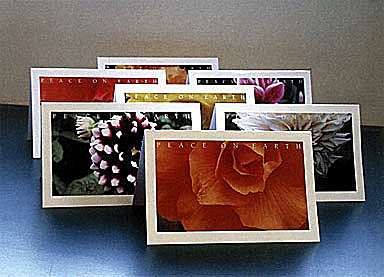 Digital
photography has many uses. One of them is in creating greeting cards. And
holiday time is the time for them. If you want your holiday greeting cards
to be more personable, perhaps it's time to start creating them yourself
using your own digital photos. Digital
photography has many uses. One of them is in creating greeting cards. And
holiday time is the time for them. If you want your holiday greeting cards
to be more personable, perhaps it's time to start creating them yourself
using your own digital photos.
Many desktop printers come bundled with software containing greeting card
format templates, and even if they don't, most imaging applications,
including Photoshop CS/2/3, and Elements, enable desktop printing to pretty
much any format you can think of. A quick Google search will also turn up
freebie greeting card templates to satisfy most any need.
Assuming your printer is greeting card ready, the first thing you'll want to
do is pick a paper stock that fits your needs. Inkjet greeting cards are
available in gloss, matte, and fine art surfaces. A number of them are
double-sided and many come pre-packaged with envelopes. While glossy
surfaces mimic the look and feel of postcards, many of the fine art papers
are museum quality and depending on the printer and inks used, can be
matted, framed, and admired for years to come.

If you donít want to spend the extra money to buy special greeting card
stock, you can do nicely with regular 24-pound paper or 35-pound card stock
from your local office supply store or online. Each piece of stock will
print two cards that fold over the top or to the left. You can get
acceptable results by printing on 24-pound white paper but the lite card
stock will also give you good results. Printing your photos on these papers
will give you a matt look which works well with greeting cards.
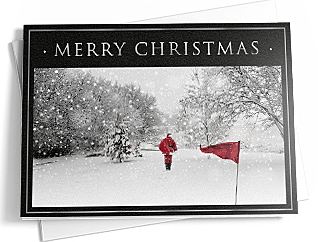 Youíll
be able to purchase envelopes in various pastel shades that will fit one
half sheet of paper at any office supply store. Youíll
be able to purchase envelopes in various pastel shades that will fit one
half sheet of paper at any office supply store.
While you can use a word processing program like Microsoft Word or Corel
Wordperfect to lay out your cards, Microsoft Publisher is much easier to
use. Itís a part of Microsoft Office. Pick the template for greeting cards,
then insert your photo twice onto each template. After printing your photos
on the cards, youíll need to cut the paper in half to separate them.
These cards wonít have any text inside unless you insert it while in
Microsoft Publisher. Or you can just print the photos and handwrite the
inside greeting.
Besides holiday cards, you can create cards for other occasions and even
note cards.
If you wish to go with commercial greeting card packs, you can choose from
the following:
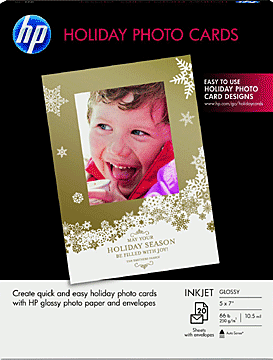 Hewlett-Packard
Premium Photo Greeting Cards are 240 gsm/10 mil smudge-proof glossy cards
measuring 4 x 8". They come in packs of 40 and include envelopes. Hewlett-Packard
Premium Photo Greeting Cards are 240 gsm/10 mil smudge-proof glossy cards
measuring 4 x 8". They come in packs of 40 and include envelopes.
Inkpress Archival Greeting Cards come in the form of 80 lb, dual-sided
sheets measuring 7 x 10". Each sheet is pre-scored to fold up into 5 x 7"
greeting cards. There are 20 a rchival (acid and lignin-free) cards per pack
along with matching envelopes.
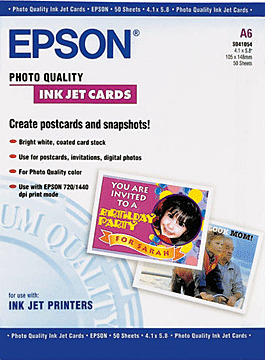 Epson's
Photo Quality Ink Jet Cards measure 4 x 6", are finished in an ultra-smooth
matte surface, and come in packs of 50. Printable on both s ides, Epson
inkjet cards meet postcard rate standards for mailing purposes. Epson's
Photo Quality Ink Jet Cards measure 4 x 6", are finished in an ultra-smooth
matte surface, and come in packs of 50. Printable on both s ides, Epson
inkjet cards meet postcard rate standards for mailing purposes.
Cranes, a well-respected American paper manufacturer, produces a full line
of fine art quality inkjet greeting cards under the name Museo, which are
available in the following sizes; 3.8 x 9.1" (panorama), 5.25 x 5.25", 5.5 x
7.5", and 4.5 x 6".
Available in a choice of 10 or 50 sheet packs, Museo greeting card stock
weighs in at 220 gsm and a thickness of14 mil. Envelopes are included.
You can print holiday greeting cards on most Epson, Canon, and HP desktop
printers.
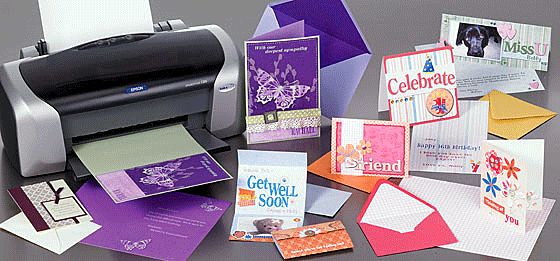
Free online greeting and holiday card tutorials along with card templates
for a variety of occasions are available from Epson (The Epson Creative
Zone), Canon (Canon Creative Park), and HP (HP Home & Office Activity
Center).
Though most printers available today accept heavier paper stocks, check your
manual to see if your printer can handle media thicker than 200 gsm before
you go out and order paper that won't feed through your particular printer.
You should also keep in mind if your printer uses dye-based inks, there's a
chance the image will begin fading by Valentine's Day if it's taped to the
fridge, and perhaps Memorial Day if kept tucked away from light and
humidity.
On the other hand, if your printer uses any of the more durable inks, your
cards will undoubtedly bring smiles to faces for years to come.
|


